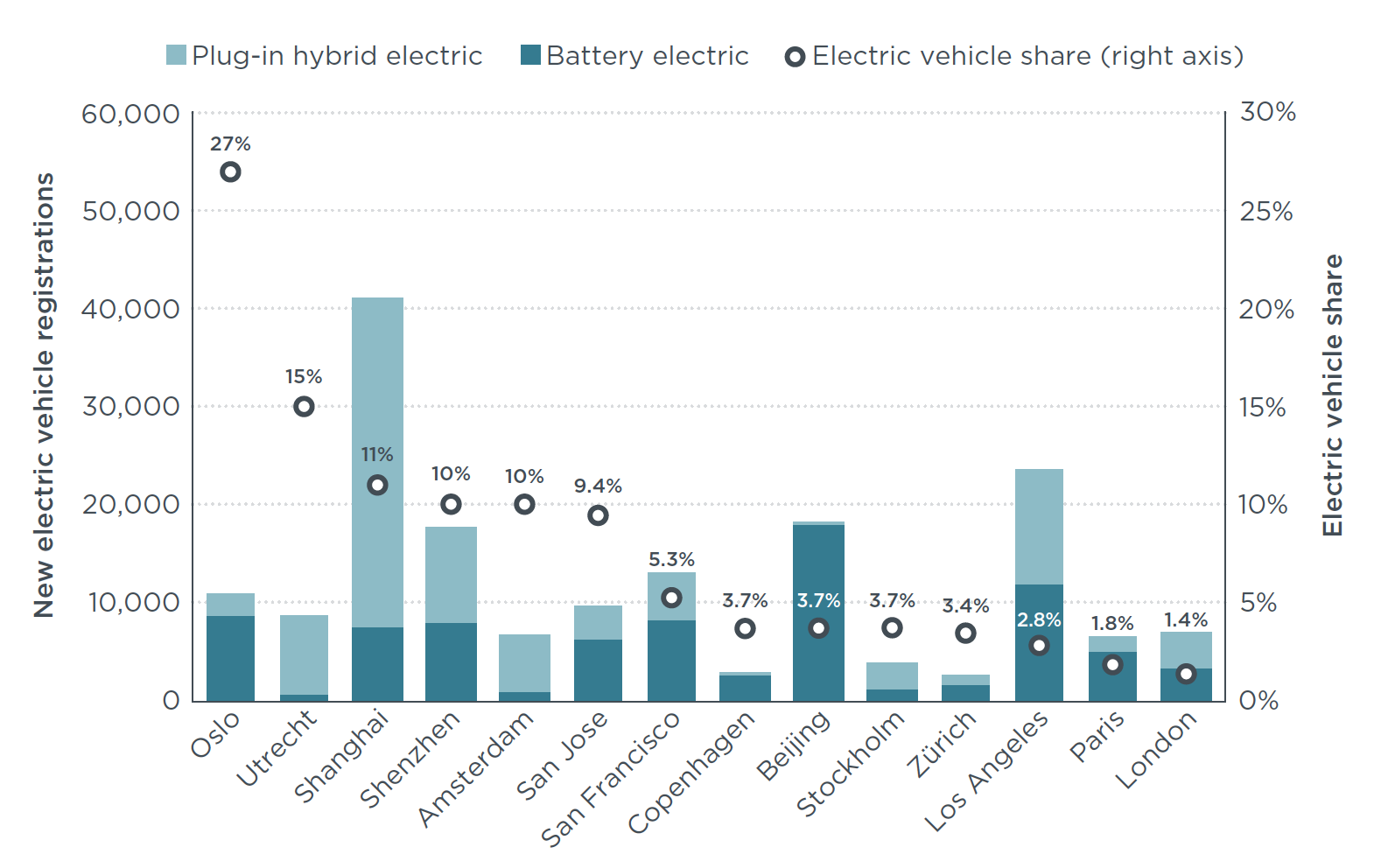Electric vehicle capitals of the world: Demonstrating the path to electric drive
Blog
Cities compete to claim title of world EV capital
Perhaps now more than ever we should look to cities for innovative transportation policies. Cities face transport issues up close, and I don’t mean potholes, tolls, traffic, and parking. Roadways of emission-intensive, internal combustion cars remain the lifeblood of nearly every major city. Without a shift to alternatives, we’ll eventually have 2 billion cars literally putting cities under water.
There are plenty of strong mayors around the world who are willing to take matters into their own hands, as the science becomes increasingly clear that climate change demands action. In an open letter to the newly elected American president, 35 U.S. mayors committed to taking bold action to tackle the climate crisis. The Global Covenant of Mayors for Climate & Energy now has more than 7,100 cities in 119 countries collaborating, comparing progress, and fighting climate change.
But what, specifically, is a city to do? Many cities start with long-term carbon mitigation and renewable energy targets. The 20-member Carbon Neutral Cities Alliance, including San Francisco, New York, and Yokohama, committed to carbon emissions cuts of 80% or more, or 100% renewable energy by 2050. Inevitably, transportation rises to the top as needing major reductions. Vehicles account for 66% of carbon pollution in Seattle, 55% in Oslo, 43% in San Francisco, and 21% in London.
This points to the need to switch the world’s car fleet to electricity. Global, European, U.S., and California studies all tell us that the transport sector cannot achieve long-term climate goals without a massive shift to vehicles powered by electricity from low-carbon energy sources. The ZEV Alliance’s 14 European and North American national, state, and provincial governments have committed to ramping up to all zero-emission vehicle sales by 2050.
For all that, it may seem a little discouraging that electric vehicles still make up just 1% of global car sales. But under the radar, electric vehicle hot spots are emerging – driven by cities that are learning how to prime the market. Our 2016 analyses of European cities, California cities, and U.S. metropolitan areas showed that in leading markets EVs reached 5% or 10% or even bigger shares of sales. Our research continues to find that leading electric markets are succeeding in breaking down the barriers of cost, convenience, and information by offering financial incentives, deploying charging infrastructure, and conducting consumer education campaigns.
In our latest report we identify 14 global electric vehicle capitals where EV sales are in the thousands of vehicles and are climbing well above the global average of 1%. In the metropolitan areas of San Jose, Amsterdam, Shenzhen, Shanghai, Utrecht, and Oslo, electric sales ranged from 9% to 27% of the market. In Beijing, Shanghai, and Los Angeles, EV volume reached 18,000 to 42,000 sales in 2015. Combined, the 14 markets accounted for more than 170,000 electric vehicle sales in 2015, about a third of the global total.

Electric vehicle registrations and electric vehicle share of new vehicles in 2015 in 14 metropolitan areas
Is a clear “electric vehicle capital” emerging? Oslo confidently claims the title based on its 27% EV market share, and Los Angeles with almost 25,000 EV sales in 2015, wants it. London has a similar vision to be Europe’s ultra-low emission vehicle capital. San Francisco, Oakland, and San Jose are also in the running, and so are Amsterdam and Stockholm. With China’s electric market expanding, Shanghai, Beijing, and Shenzhen are recording tens of thousands of annual EV sales.
Such urban policy successes may signal the first steps toward an electric-drive future. As attractive new electric models hit markets everywhere, more cities can learn from each other about what measures work to fuel the nascent zero-emission vehicle market. The world needs it now more than ever.
